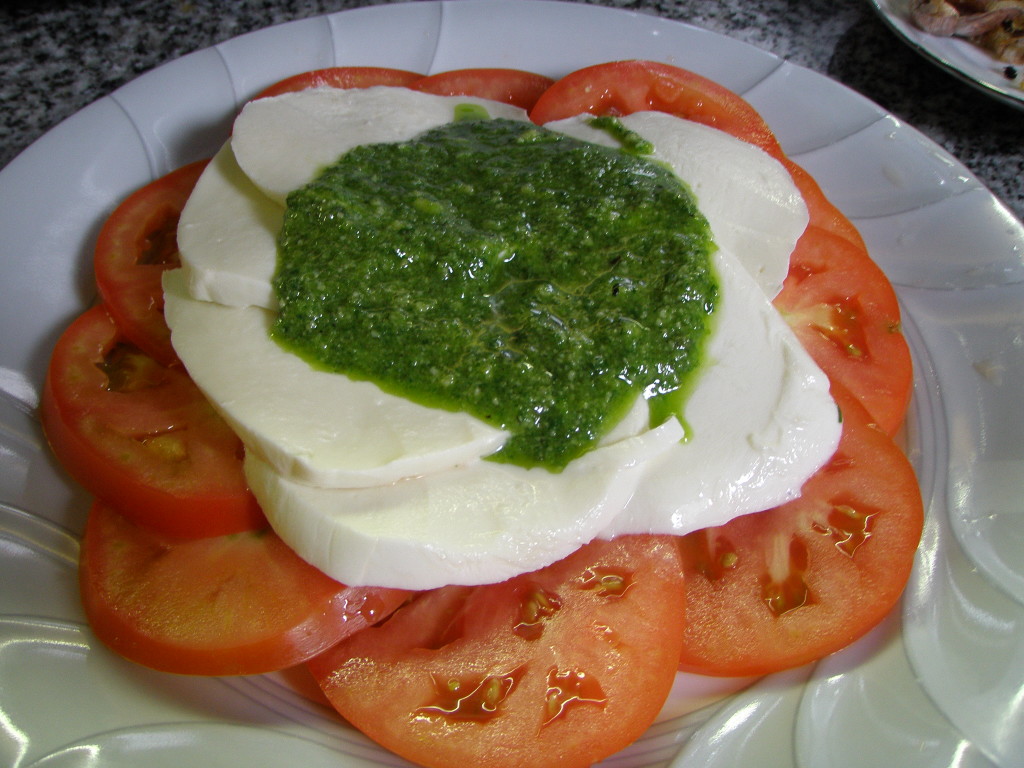On Sunday supplement
Food and Wine
I’m not going to enter the fray and dispute over pasta here in Buenos Aires. For many of us from overseas, pasta here tends to be cooked to a point of limpness that we find too far gone. And, for many from here, what we call al dente they call tan crudo! It’s not an argument worth having and it’s simply a cultural preference and custom.
I will, however, delve into, as I have in a recent column, the world of pasta sauces – it continues on the theme I’ve embarked on recently of pastas, gnocchis, etc. And the sauce of the moment – pesto. Let’s start with what it is, at it’s heart. It’s a pounded paste. In fact, that’s what the word means – paste. Traditionally it’s made in a mortar and pestle, and made with the freshest ingredients possible, and generally at pretty much the ultimate moment to preserve that freshness.
What it isn’t, is a specific set of flavors. There’s certainly the classic pesto Genovese that comes to mind when the word is spoken – basil, garlic, pinenuts, parmesan – but it’s not just a set of flavors. In the last few years I’ve been subjected to versions of this sauce that have ranged from dried out spaghetti with a sprinkling of dried basil flakes, browned bits of over-cooked garlic, and a dusting of pre-processed grated cheese, to an entire soup bowl filled with olive oil and slices of burnt garlic and chopped spinach with some noodles floating in it. They’ve missed the point.
Just as importantly, Genovese is not the only pesto out there. Truly, if you make a paste to toss with your pasta or spoon on your meat or vegetables, you’ve made a pesto. And getting creative is half the fun – just do it with some respect for the basic ingredients. Can you use a food processor or blender instead of a mortar and pestle? Of course, but it won’t be the same texture nor experience. Here is a trio of my favorites:
Pesto Genovese
1 large bunch of fresh basil
50 gm parmesan, just grated
3-4 cloves of garlic
25 gm pinenuts
50 ml good olive oil
Salt and pepper to taste
Mash together the first four ingredients to form a coarse paste. Add a teaspoon of water if you need to help it mash. Transfer to a bowl and whisk in the olive oil, a little at time, like making a mayonnaise, in fact, that’s more or less the consistency you’re going for. Season to taste with salt and pepper. Toss with linguini or fettucine, or serve over fresh tomatoes and mozzarella for a refreshing take on a Caprese salad.
Walnut Pesto
250 gm walnuts, ground
50 gm toasted pine nuts
2 cloves garlic
2-3 tablespoons of chopped parsley and/or oregano
100 gm ricotta or mascarpone
100 ml olive oil
salt and pepper to taste
In a mortar or small processor, puree the walnuts, pine nuts, garlic and herb(s). Season the mixture with salt and pound or grind to a smooth paste. Transfer to a bowl, add the cheese and 1 tablespoon of water. Whisk until smooth and then whisk in the olive oil to create a creamy sauce. Excellent served warm (but not cooked) over spinach filled pansoti or ravioli.
Green Olive-Almond Pesto
250 gm fileted almonds
125 gm green olive paste
1 tablespoon hot red pepper flakes
60 ml fresh orange or tangerine juice
60 ml good olive oil
salt and pepper to taste
Since the olives are already in a paste, this recipe actually works better in a blender or processor. Simply place all the ingredients in and blend until smooth. Season to taste with salt and pepper. This is delicious over lighter grilled meats – chicken, goat, fish.
A series of recipes and articles that I started writing for the Buenos Aires Herald Sunday supplement, Food & Wine section, at the beginning of 2012. My original proposal to them was to take local favorite dishes and classics and lighten them up for modern day sensibilities. We’re not talking spa or diet recipes, but at the very least, making them healthier in content, particularly salt, fat and portion size. As time went by, that morphed into a recipe column that, while emphasizing food that is relatively “good for you”, wasn’t necessarily focused on local cuisine. At the beginning of 2013 I decided to stop writing for them over some administrative issues, but it was fun while it lasted.
